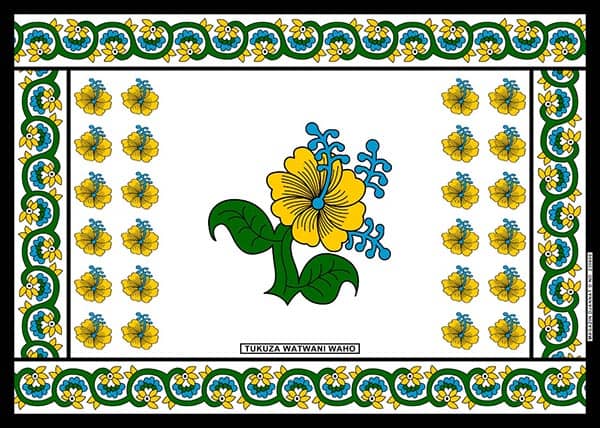Khanga wax printed fabric, also known as “khanga cloth,” is a vibrant and colourful fabric traditionally worn by women in East Africa, particularly in Tanzania and Kenya. The region deeply intertwines the word “khanga” with its local traditions, customs, and identities, as it holds significant cultural and social importance. The word “khanga” in Swahili means “wrap,” reflecting its primary use as a garment to wrap around the body. Visit: Khanga Wax Printed Fabric Manufacturers in India
Here is an overview of khanga wax printed fabric:
Design and Patterns
Khanga fabric features bold and vibrant designs, often showcasing intricate patterns, motifs, and messages. The patterns can range from geometric shapes and floral motifs to cultural symbols, proverbs, and even political messages. Each design holds its own meaning and significance, and the choice of design can reflect the wearer’s personality, beliefs, or current social issues. Explore: Super Wax Fabrics Manufacturers in India
Wax Printing Technique
The production process of khanga fabric involves a wax printing technique. We apply hot wax to the fabric using wooden stamps or metal screens, creating a resist pattern that prevents dyes from penetrating certain areas. Then, we dip the fabric into vibrant dyes, resulting in colorful and distinctive designs. Finally, we remove the wax through boiling or washing, revealing the final printed pattern.
Symbolism and Meaning
Khanga fabric often carries symbolic meanings, reflecting cultural values, aspirations, and messages. Some designs convey messages of love, wisdom, unity, or good fortune, while others celebrate traditional ceremonies or events. We can include proverbs or Swahili phrases in the content to provide wisdom, inspiration, or social commentary.
Versatility
Khanga fabric is incredibly versatile and can be used for various purposes beyond clothing. The wearer can use it as a head wrap, skirt, dress, or shawl, expressing their creativity and fashion sense. Moreover, households often use khanga fabric as a decorative element, such as tablecloths, curtains, or wall hangings, to add a vibrant touch to the living space.
Cultural Significance
Khanga fabric holds deep cultural significance and plays a significant role in various aspects of East African life. People wear it on special occasions, including weddings, religious ceremonies, and cultural festivals, to symbolize tradition, identity, and celebration. They also exchange Khanga fabric as gifts, tokens of appreciation, or a means of communication, conveying messages or expressing sentiments.
Economic and Social Importance
The production and trade of khanga fabric support the local economy, providing employment opportunities for artisans, fabric manufacturers, and traders. It is a source of income for many communities involved in the textile industry. Moreover, the khanga fabric serves as a means of self-expression and empowerment for women, promoting entrepreneurship and economic independence.
In conclusion, khanga wax printed fabric is a culturally rich and visually striking textile that holds great significance in East African societies. Its vibrant designs, symbolic meanings, and versatility make it a cherished garment and a symbol of identity, tradition, and celebration. The artistry and craftsmanship involved in the production of khanga fabric contribute to the cultural heritage and economic vitality of the region.
Read About: Overview of Canada Express Entry
